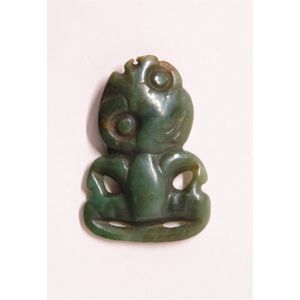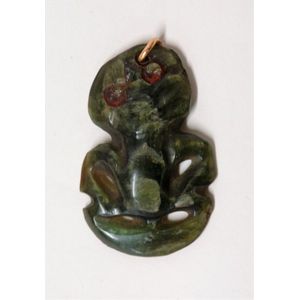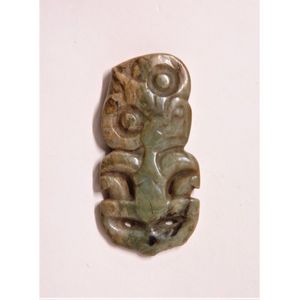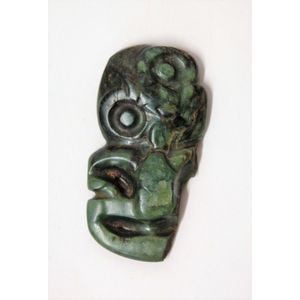Broken Maori Pounamu Hei Tiki with Concealed Suspension Hole
You must be a subscriber, and be logged in to view price and dealer details.
Subscribe Now to view actual auction price for this item
When you subscribe, you have the option of setting the currency in which to display prices to $Au, $US, $NZ or Stg.
- Calamander / Coromandel - Calamander wood, also known as coromandel wood or coromandel ebony, is a type of hardwood that comes from the Calamander tree (Diospyros quaesita), which is native to Sri Lanka, India, and Southeast Asia. The wood is known for its dark brown or black colour and its distinctive figuring, which can resemble a snakeskin pattern.
The wood is highly prized for its beauty and durability. It is often used in fine furniture making, particularly in the production of inlaid and marquetry work, as well as in the making of boxes, cabinets, and other decorative items. It is also used in the manufacture of flooring, paneling and other architectural applications.
Calamander wood is a very hard and heavy wood, it has a density of around 1.04 g/cm3. Its density and high natural oil content make it resistant to decay and insects, which is why it is a popular choice for outdoor furniture, flooring and other decorative items.
The wood is also used for turning and carving, but is difficult to work due to its high density and interlocking grain. However, it takes a high natural polish and has a beautiful lustre, which is why it is so sought after.
Due to the high demand and over-exploitation of the natural resources, the calamander tree is now a protected species, and the harvesting and export of the wood is heavily regulated. - Pre-European - As applied to New Zealand Maori artifacts, the artifact dates to before Captain Cook (1760s and earlier)
This item has been included into following indexes:
- Maori artefacts
Visually similar items

A pre-European Maori pounamu hei tiki, traditional tapered form, head to left shoulder, hands to thighs, three early suspension holes all broken through, good mid-green tone. Length 7.7 cm, width 5.3 cm. Provenance: The Flower Family Collection.

Hei Tiki. Good example in orthodox form, the head with red wax inset to eyes and tilting to the left and Hands resting on thighs. Pierced hand drilled hole to top of head. Length 9.5 cm. Width 5.3 cm

A 19th century Maori pounamu hei tiki, translucent bowenite carved with rounded stomach and rudimentary features, traces of red sealing wax to eyes. Length 6.2 cm. Gold suspension ring fitted.

A pre-European Maori carved pounamu hei tiki, traditional form with head to left shoulder, hands to thighs, concealed notch and hourglass cut suspension hole broken through, pale to mid-green/grey tone with pale tan and dark included highlights. Length 9.8
